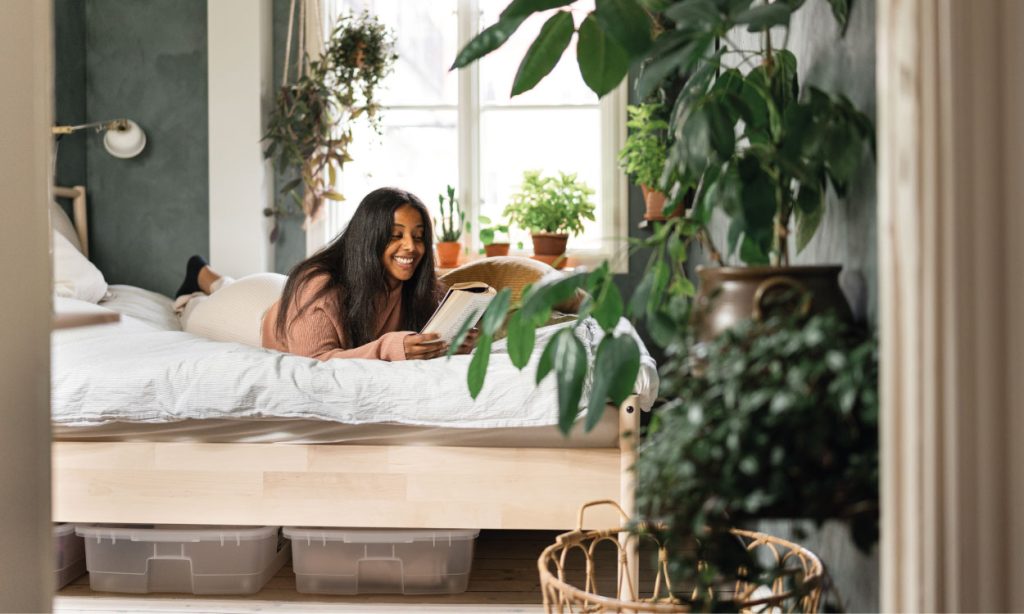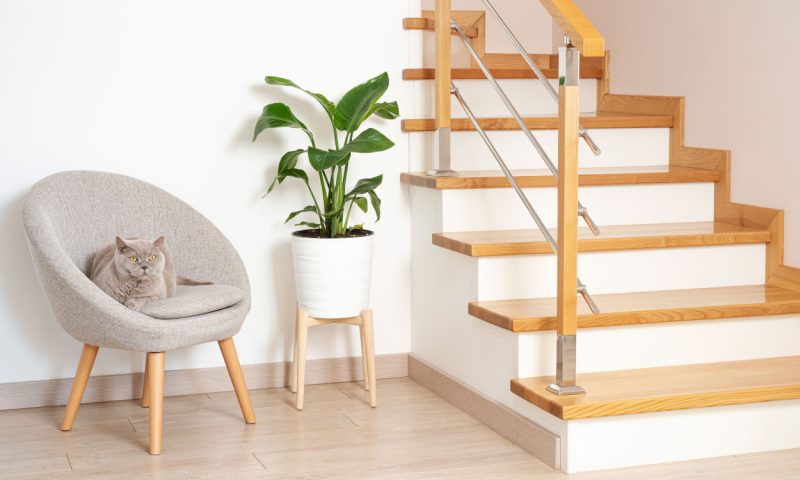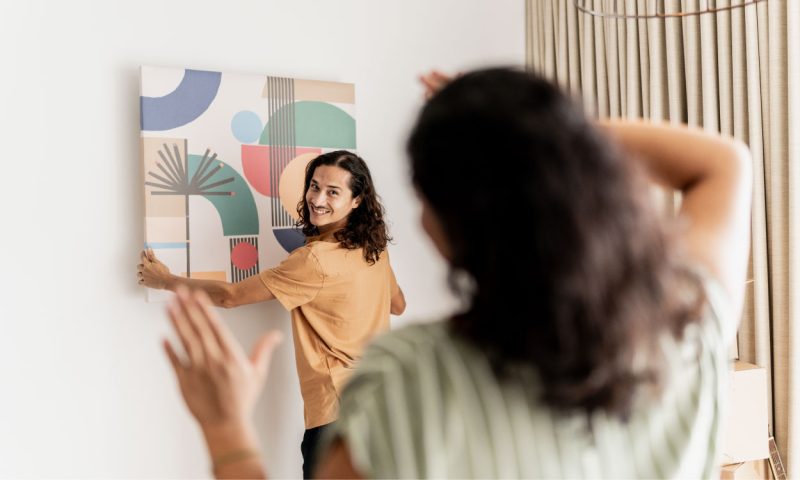What Plants are Good for Bedrooms?

If you’re looking to bring a little more life into your home, adding indoor plants is one of the simplest and most rewarding ways to do so. Not only do plants brighten up your space and bring a natural, calming aesthetic, but some are especially good for the bedroom thanks to their air-purifying properties and calming scents.
But what plants are good for bedrooms? In this article, we’ll explore some of the best bedroom plants to help create a more relaxing and sleep-friendly environment.

What plants are good for bedrooms?
There is a wide range of plants that are suitable for bedrooms, and deciding what’s best can be tricky.
Here’s a list of some options to consider:
Lavender
Lavender is well-known for its calming scent. It’s often used in essential oils, candles and bathing products, but is just as beneficial when placed in bedrooms.
Placing lavender in a bedroom can help reduce stress and anxiety levels, and placing it on a bedside table can also aid sleep. While lavender prefers bright light, being close to a window is normally the perfect place. Just be careful not to overwater it.
Aloe vera
Aloe vera isn’t just for treating sunburns – it’s also an excellent bedroom companion. One of the best air-purifying plants you can buy, it releases oxygen at night while absorbing carbon dioxide, making your bedroom’s air cleaner as you sleep.
It is also low-maintenance, preferring indirect sunlight and infrequent watering. This means it’s ideal if you’re busy and want a plant without any fuss.
Jasmine
As well as being pleasing on the eye, the gentle scent of Jasmine has been found to promote better sleep and reduce anxiety. Its tiny white flowers and soft fragrance make it a calming presence in any bedroom.
Snake plants
The snake plant is practically indestructible. It’s one of the best plants for improving air quality as it filters out toxins. Better still, it releases oxygen at night rather than during the day, like most plants. This means they’re ideal for bedrooms. They also tolerate low light and infrequent watering, so they’re perfect even if you’re not particularly green-fingered.
Pothos
Pothos, also known as devil’s ivy, is a trailing vine plant that adds a lush, tropical touch to any room. It’s incredibly easy to grow and thrives in low light, making it the perfect choice for many bedrooms.
Its cascading leaves can be styled in hanging planters or placed on shelves to create a soft, organic feel. It’s also excellent at purifying the air, but be cautious if you have pets, as pothos is toxic to cats and dogs.
Peace lily
If you want a flowering plant that’s also hardworking, look no further than the peace lily. Its glossy gren leaves combined with elegant white blooms bring a touch of serenity to any bedroom.
Plus, peace lilies are excellent at absorbing mould or mildew that can build up in bedrooms, especially during the colder months. They do well in indirect light and should be kept moist but not soggy.
Monstera
Monstera plants have become an interior design favourite in recent years thanks to their dramatic split leaves and bold presence. Beyond their stark appearance, they also help purify the air and thrive in low to medium light.
While they’re a bit bigger than other bedroom plants in this list, a monstera can enhance the calming atmosphere of a room. Just be sure to keep it out of direct sunlight and water it once the top of the soil feels dry.
Spider plants
Spider plants are one of the most adaptable and easiest houseplants to grow. They tolerate a wide range of conditions and are particularly good at removing pollutants from the air.
They also produce offshoots, which can be repotted to become brand new plants. A spider plant on a shelf or in a hanging basket can add fresh energy to your bedroom and improve the air quality as you sleep.
Orchid
Orchids are a symbol of beauty and calm, and their elegant blooms can transform the look of any bedroom. As well as their stunning appearance, unlike some flowering plants, orchids release oxygen at night, making them suitable companions for better sleep.
They prefer indirect sunlight and a humid environment, so they’re particularly well suited to bathrooms as well as bedrooms.
Can plants in the bedroom help you sleep?
Yes, certain plants do more than just decorate a space. Many of the plants in this list actively contribute to a better night’s sleep. Here’s how:
- Oxygen production: Plants like aloe vera, snake plants, orchids and more release oxygen at night, improving air quality as you sleep.
- Air purification: Many houseplants remove toxins from the air, resulting in a cleaner environment.
- Humidity: Some plants, like peace lilies and spider plants, help to maintain healthy humidity levels.
- Reduce stress: The natural scents of lavender and jasmine have been shown to reduce anxiety and induce a more restful state.
Benefits of house plants
Even if you’re not concerned about your sleep, houseplants offer a wide range of benefits in the bedroom and beyond:
- Boost mood: Interacting with and caring for plants can lower stress, anxiety and boost your overall mood.
- Improve productivity: Studies have suggested that the presence of plants can improve concentration and productivity. This is especially helpful if your bedroom doubles as a workspace.
- Aesthetic value: Adding plants is one of the easiest ways to elevate your decor and make your space feel more lived-in.
- Connect with nature: Especially important in urban settings, having plants around brings a bit of the outdoors inside, helping to keep you grounded emotionally and mentally.
Incorporating plants into your bedroom isn’t just about style; it’s a wellness-boosting choice that can also aid better sleep and improved air quality. Whether you’re a seasoned plant owner or just starting out, use our guide to help you decide on the best choice for your bedroom.
For more home improvement blogs and tips, be sure to browse our website.
The post What Plants are Good for Bedrooms? appeared first on UK Home Improvement.







